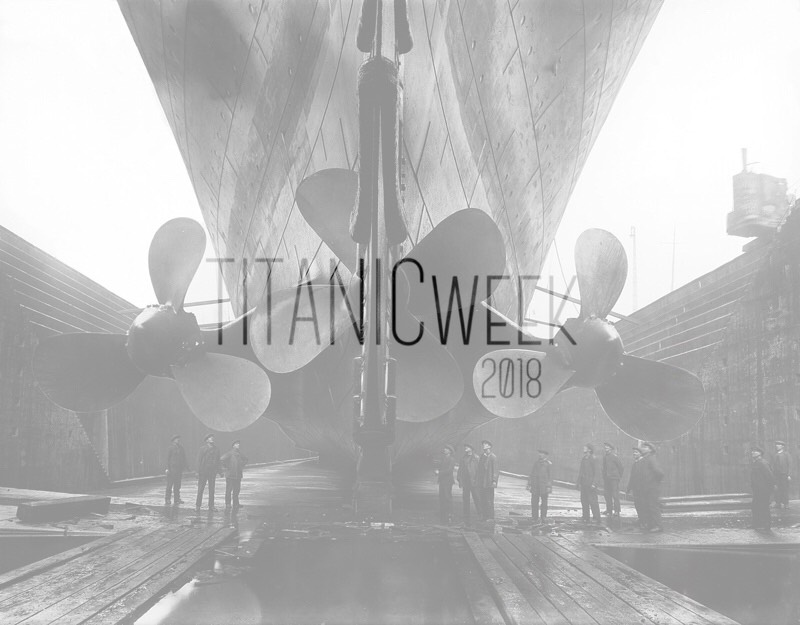“In Death, They Were Not Divided”: Isidor & Ida Straus
Isidor Straus was nine years old when he first set foot on American soil in 1854.
He, along with his three younger siblings, had been brought to New York by their mother. They then set forth to reunite with Isidor’s father Lazarus, who had already settled in Georgia two years prior to establish his mercantile business, which thrived—partly due to Lazarus’s pre-existing connections with wholesale merchants in Philadelphia, and partly due to the prosperity of local cotton plantations.
Reportedly, the Strauses were the sole Jewish family in their new hometown of Talbotton.
In 1861, sixteen-year-old Isidor was ultimately turned away from the Confederate Army of the United States; he was simply too young, he was told.
So, in 1863, after becoming the secretary to a Confederate agent, young Isidor Straus elected to become an international spy.
He hopped a ship from Charleston to Liverpool, which ran the union blockade. Isidor hid himself away—his life savings of $1200.00 in gold was sewn into his undershirt.
And after a layover of some months, staying with relatives in his birthplace of Otterberg, Bavaria, Isidor settled in London. He worked as an aide in financial deals for the Confederacy, and at all of nineteen years old, he even took on a mission to Cuba.
Isidor returned to Georgia in 1865, once the Civil War had ended. He found his family’s business destroyed, and so he convinced his family to reconsider their planned relocation to Philadelphia, in favor of New York City.
So Isidor arrived in New York broke, because he insisted on paying all of his debts prior to his departure, in spite of the fact that Confederate money had been rendered worthless.
In 1871, Isidor married Rosalie Ida Blun, whom he had met in 1863 while traveling to England.
They would go on to have seven children.
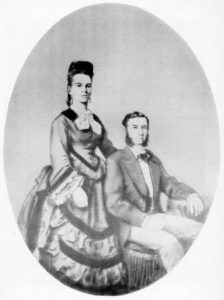
Isidor & Ida Straus's marriage portrait, 1871.
By 1871, Isidor had already been in business with his father for five years. Isidor’s brother Nathan and their brother-in-law joined in by 1873, thereby creating L. Straus & Sons, purveyors of crockery and fine china.
In 1874, L. Straus & Sons entered into an agreement with Rowland Hussey Macy, founder of Macy’s Department Store, to open a glassware department in the basement.
L. Straus & Sons became internationally successful. In 1888, Isidor and Nathan were invited into official partnership at Macy’s, which at the time boasted just over 2,000 employees.
And by 1896, Isidor and Nathan owned Macy’s outright.
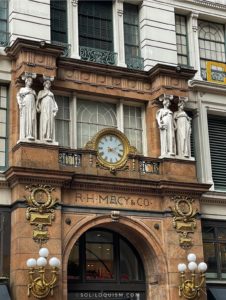
Entrance to Macy’s Department Stire on 34th Street, Manhattan, circa 2022.
© soliloquism, 2022.
Isidor and Ida were reportedly a shining example of love throughout their lives.
They traveled together constantly and were rarely apart. Even when Isidor served in the United States Congress from January 1894 through March 1895, he and Ida exchanged daily correspondence.
Perhaps out of love as well as pragmatism, Isidor declined to seek reelection.
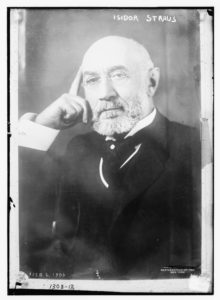
Congressman Isidor Strauss, taken on February 6, 1906. From the George Grantham Bain Collection, courtesy of the Library of Congress.
They had wintered together in Europe in 1911 through 1912, spending most of their holiday at Cape Martin in southern France.
The Strauses had not planned to travel on Titanic. Like many other passengers, however, they found themselves with no other option due to the ongoing coal miners' strike.
Their daughter had been holidaying with them, but she did not board Titanic with her parents.
The Strauses’ time on board was evidently pleasant. Thanks to the account of Colonel Archibald Gracie, we are privy to an insight as to how Isidor and Ida spent the day of Sunday, April 14.
During this day I saw much of Mr. and Mrs. Isidor Straus. In fact, from the very beginning to the end of our trip on the Titanic, we had been together several times each day. I was with them on the deck the day we left Southampton...
During our daily talks thereafter, he related much of special interest concerning incidents in his remarkable career, beginning with his early manhood in Georgia when, with the Confederate Government Commissioners, as an agent for the purchase of supplies, he ran the blockade of Europe. His friendship with President Cleveland, and how the latter had honored him, were among the topics of daily conversation that interested me most.
On this Sunday, our last day aboard ship, he finished the reading of a book I had loaned him, in which he expressed intense interest. This book was 'The Truth About Chickamauga,' of which I am the author...
I recall how Mr. and Mrs. Straus were particularly happy about noon time on this same day in anticipation of communicating by wireless telegraphy with their son and his wife on their way to Europe on board the passing ship America. Some time before six o'clock, full of contentment, they told me of the message of greeting received in reply. This last good-bye to their loved ones must have been a consoling thought when the end came a few hours later.
Excerpt from "Titanic: A Survivor's Story," by Archibald Gracie, 1912 (reprinted by Sutton Publishing, 2008.)
On the night of the collision, Isidor and Ida found themselves at Lifeboat 8--the same lifeboat where Victor Penasco was desperately trying to get his sobbing bride, Pepita, to leave him and save herself.
Ida Straus stepped in, she expected Isidor to sit next to her; instead, thinking his wife out of harm's way, he stepped back on deck.
Ida immediately removed herself from the lifeboat and refused to reenter without her husband. Other First-Class passengers tried to secure a spot for Isidor aside Ida, but he refused.
Archibald Gracie described the scene as he witnessed it.
The self-abnegation of Mr. and Mrs. Isidor Straus here shone forth heroically when she promptly and empathically exclaimed: 'No! I will not be separated from my husband; as we have lived, so will we die together;' and when he, too, declined the assistance proffered on my earnest solicitation that, because of his age and helplessness, exception should be made and he be allowed to accompany his wife in the boat. 'No!' he said, 'I do not wish any distinction in my favor which is not granted to others.' As near as I can recall them these were the words which they addressed to me. They expressed themselves as fully prepared to die, and calmly sat down in steamer chairs on the glass-enclosed Deck A, prepared to meet their fate.
Excerpt from "Titanic: A Survivor's Story," by Archibald Gracie, 1912 (reprinted by Sutton Publishing, 2008.)
First-Class passenger Hugh Woolner was another survivor who witnessed this, and testified to as much during the Senate Inquiry.
She would not get in. I tried to get her to do so and she refused altogether to leave Mr. Straus. The second time we went up to Mr. Straus, and I said to him: "I am sure nobody would object to an old gentleman like you getting in. There seems to be room in this boat." He said: "I will not go before the other men."
Then, when Idisor tried in desperation to persuade Ida to get back in her seat, she again refused.
She was overheard by several witnesses, including steward Alfred Crawford, who testified at the Senate Inquiry, as stating, "We have lived together for many years; where you go, I go."
It is likewise reported that Ida Straus said, "I will not be separated from my husband. So we have lived, so we will die--together," but witness accounts do not seem to support this very particular word choice.
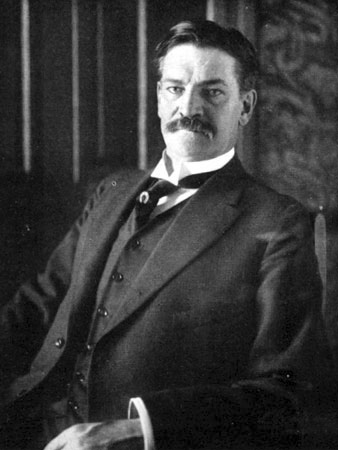
Archibald Gracie IV.
In any case, Ida gave her chambermaid, Ellen Bird, her fur coat to keep warm in the lifeboat. Ida simply told Ellen that she would no longer need it.
And Lifeboat 8 was lowered away without the Strauses.
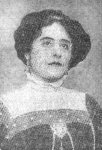
Miss Ellen Bird, maid to Ida Straus.
Some say Isidor and Ida were last seen holding each other on deck, weeping. Others insisted that they were sitting on deck chairs, holding hands until a wave washed them into the sea. Others still attested only to the couple, arm-in-arm, on deck.

Isidor & Ida Straus.
Isidor's corpse was the 96th body recovered by the Mackay-Bennett. It was listed as follows.
NO. 96 - MALE - ESTIMATED AGE, 65 - FRONT GOLD TOOTH (Partly) - GREY HAIR AND MOUSTACHE
CLOTHING - Fur-lined overcoat; grey trousers, coat and vest; soft striped shirt; brown boots; black silk socks.
EFFECTS - Pocketbook; gold watch; platinum and pearl chain; gold pencil case; silver flask; silver salts bottle; £40 in notes; £4 2s 3d in silver.
FIRST CLASS - NAME - ISADOR STRAUSS
Ida's corpse was never found.
The last devotion of Isidor and Ida was a tale immediately and widely told, and it galvanized an outpouring of public sentiment and admiration.
Forty thousand people attended the memorial at Carnegie Hall in New York City, which could hold a mere fraction of the mourners.
Isidor was posthumously lauded by the New York Times as “a representative of humanity in its best form.”
A small memorial was erected in Manhattan, located off of 106th Street. The landscaped plot, aptly christened Straus Park, bears a bronze statue of a water nymph that once gazed upon a reflecting pool. This water feature was transformed into a flower bed in the 1990s with the consent of the Straus family.
Straus Park was dedicated on April 15, 1915, exactly three years to the date of the Titanic disaster. Isidor’s younger brother, Oscar, was one of many in attendance.
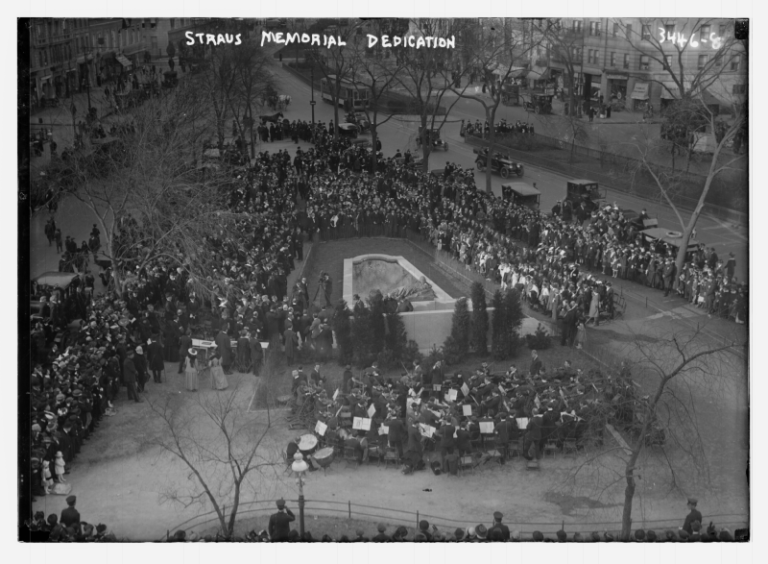
Dedication of Memorial to Isidor & Ida Straus on April 15, 1915. Courtesy of Library of Congress.
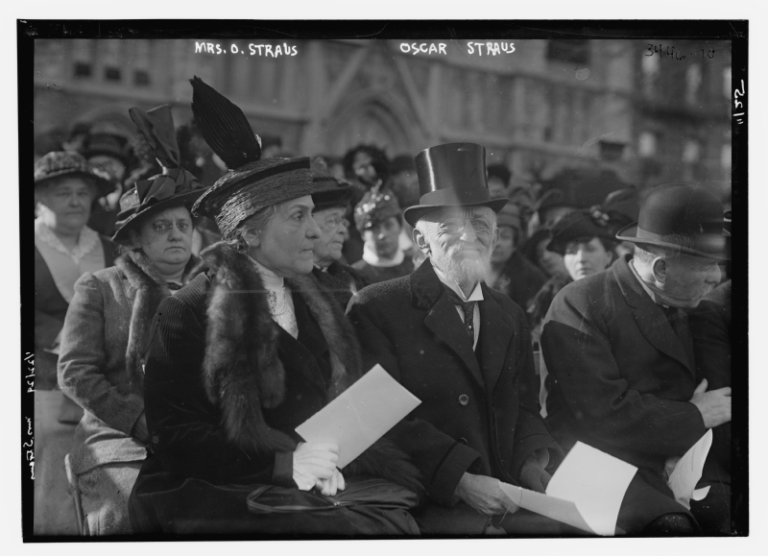
Isidor's brother, Oscar Straus, at the dedication to the memorial of Isidor & Ida Straus on April 15, 1915. Courtesy of Library of Congress.
Isidor Straus was laid to rest in the couple’s mausoleum in the Bronx. Because Ida’s remains were not recovered, the Strauses collected ocean water from the wreck site in an urn and interred it beside Isidor.
The Straus mausoleum is thusly engraved.
Many waters cannot quench love -- neither can the floods drown it.
In 1913, approximately 5,000 Macy's employees donated their meager wages toward a memorial plaque for the Strauses, who were much beloved, particularly Isidor.
It's been reported that "'Mr. Isidor,' as he was known, regularly walked the shop floor, a pink carnation boutonnière stuck in the lapel of his dark suit jacket as he greeted workers by name."
The memorial plaque was re-dedicated in 2014 at the so-named "Memorial Entrance" on 34th.
It reads, "Their lives were beautiful and their deaths glorious."
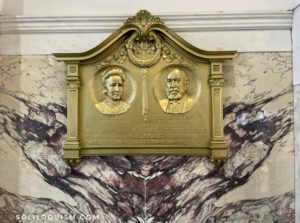
Memorial plaque at Macy's 34th Street Entrance.
© soliloquism, 2022
SOURCE MATERIAL
Gracie, Archibald. "Titanic: A Survivor's Story." Sutton Publishing, 2008.
https://www.immigrantentrepreneurship.org/entries/isidor-straus/
https://forward.com/news/154407/mystery-shrouds-macys-titanic-plaque/
https://www.encyclopedia-titanica.org/titanic-victim/isidor-straus.html
https://www.encyclopedia-titanica.org/titanic-survivor/colonel-archibald-gracie.html
https://www.titanicinquiry.org/USInq/AmInq11Gracie01.php
share
